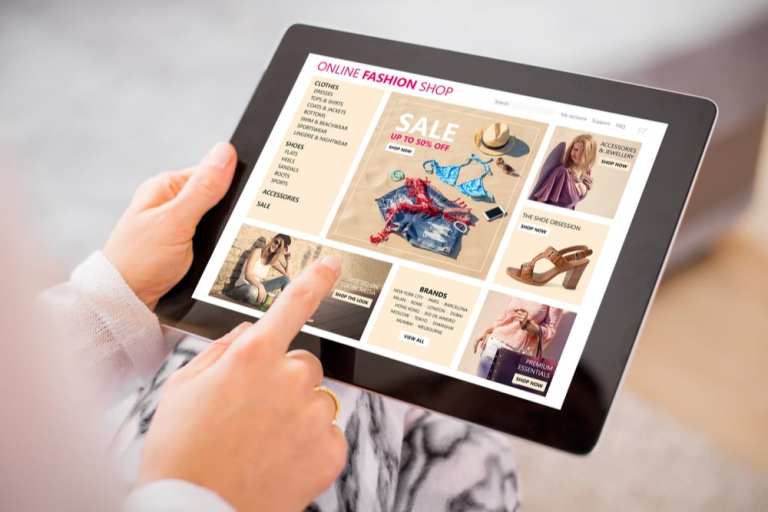
After hitting a skid from the beginning to the middle of the COVID-19 crisis, online fashion sales have caught fire. A sweep of industry anecdotal evidence — reinforced by exclusive data gathered by PYMNTS — shows the past two weeks have seen a dramatic jump in apparel and accessories sales.
Reports of apparel sales falling off as much as 30 percent on a year-to-year comparison appeared toward the end of March, with several reports citing March 20 as the lowest day of traffic and sales for the industry. PYMNTS data picked up the trend in its March 17 cut of more than 2,000 respondents as part of its COVID-19 consumer behavior tracker. That report (measured before the majority of states locked down non-essential retail) showed that 56.9 percent of respondents shopped for apparel in stores either somewhat or much less than they did before the coronavirus crisis. That business did not transfer online, according to the PYMNTS data. Only 8.1 percent said they were shopping online for these items more frequently.
Fast forward two weeks. The March 27 cut of the PYMNTS survey found 19.1 percent of consumers had shifted their purchase to online retail. Couple that with 11.1 percent of respondents shopping somewhat or much more than the March 17 survey and the evidence of a comeback was easier to see.
“While commerce carries on and people still have needs that must be filled by merchants with the means to fill them, how those needs are being filled is changing,” said the PYMNTS report. “A world that was trending toward digital-first has now implanted itself into a nearly digital-only world, as consumers are shifting their spend online across categories.”
Vogue Business was among the outlets picking up on the surge. It reported that new users for fashion try-on app Forma have been doubling each week. Its users are spending more than 50 percent more time on it compared to pre-crisis levels. Drest, the six-month-old fashion gaming app that lets users style digital models, is seeing a 50 percent month-over-month increase in downloads and in Italy, it saw a 400 percent spike during the first week in April. App Annie, a site that measures app downloads and activity, says overall time spent in fashion apps is up 20 percent compared to 2019.
Retail sales numbers expected later in the week will detail the retailers that have been the beneficiaries of the late surge. Nordstrom Chief Executive Erik Nordstrom told a KeyBanc virtual event last week that eCommerce will accelerate.
“I think it’s important for people to understand is, the times we’re in in particular, lends itself to the flexibility we have in of our model,” Nordstrom said. “Our model being Full-Price and Off-Price, being stores and online, and a lot of the digital capabilities that we have invested in the last couple of years.”
That model, he continued, “allows us to flex. The times we are in right now demand great flexibility. As stores close, we are leaning on our eCommerce business. We have both Full-Price and Off-Price ecommerce capabilities. The Off-Price part is unusually large. There are not many online, Off-Price [businesses out there] … Not only is the eCommerce side of our business running as normal with our fulfillment centers, we have also had store fulfillment capability for quite some time, and normally fill roughly 20% of our Nordstrom.com orders from our stores. Right now, we are filling about 50% of our online orders from our stores.”